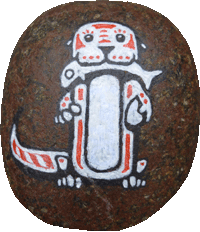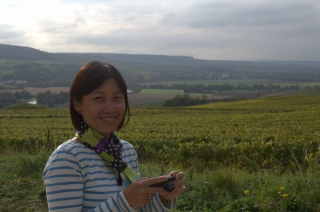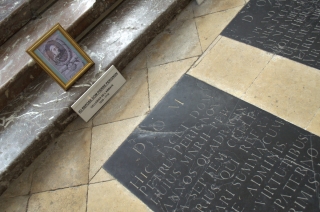20th October 2012
Today we hopped in the car and toured around the vineyards of the Marne Valley, all turning yellow and amber in the late October sun. We stopped off for some tastings, our favourite being M. Alain Suisse at his tiny one-man independent champagne house in the village of Cumières. Although he spoke no English, Vanessa managed to recall enough French to keep us all up on what he was explaining. Of course we bought some champagne from him too, including an unusual one that was entirely Pinot Meunier and so surprisingly fruity for a champagne.
Wine geek notes
Champagnes are made out of three grapes: Chardonnay, Pinot Noir and Pinot Meunier. There are two fermentations: in the first, the grapes are fermented in the open to make a still white wine; in the second the still wine is fermented in bottles, trapping the fermentation gases which dissolve back into the wine.In a classically balanced bubbly the Chardonnay provides acidity, brightness and a sense of terroir; Pinot Noir provides body, character and depth; Pinot Meunier provides fruit and balance. But you can have a “blanc de blanc” champagne made with 100% Chardonnay (the only white grape of the three) or a “blanc de noir” made entirely with the two black grape varieties. A rosé champagne is typically made by adding a little red wine (also locally made) to the still champagne wine, but more rarely the rosé can be made by leaving the red grape skin in during the first fermentation of the champagne wine for a couple of days before removing it. These methods are called “assemblage” and “maceration” respectively.
In the Champagne region there are a handful of villages with Grand Cru vineyards, and a bunch more with Premier Cru vineyards. So of course to be a Grand Cru winemaker you must come from one of those villages and only your champagnes that use entirely Grand Cru grapes can be called Grand Cru champagne. Most champagnes are “Réserve”, meaning they are non-vintage as they’re made with wine reserved from a couple of different years and mixed. The expensive ones are “Millésimé”, vintages of only one year, and thus they represent the true character of that year’s grapes – for better or worse.
Lunch was a hefty affair, as we couldn’t find a simple café so ended up in a restaurant. Tim had pink kidneys, I had veal head (tête de veau) and Maureen went for tripe sausage (andouillette). The latter was so immensely pungent that for the rest of the day whenever Maureen tasted a champagne the next person to try the glass was hit by a waft of tripe. This was proper nasty French country food.
We managed to squeeze in a ramble around a couple of pretty villages, including the church where Dom Pérignon lies buried. But to be honest these were mere distractions beside the serious task of finding more champagnes to taste. I hasten to add that, as designated driver (“monsieur chauffeur”), I was having only the tiniest sips. I can’t usually bring myself to actually spit out good wine! Anyway, what with a return visit to the champagne bars of Épernay in the evening we managed to reach a respectable 28 champagnes sampled by bedtime.
We slept well!
Related Images:















































